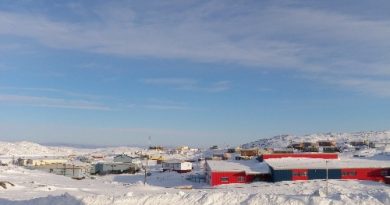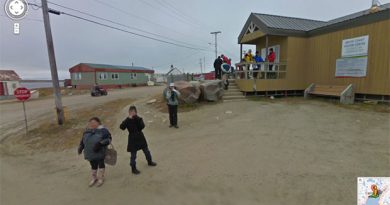How the Arctic became an international region
There are many remarkable things about the Arctic: its unique environment, wildlife, inhabitants and culture. Lesser known is the remarkable transition the Arctic has undergone in less than twenty-five years from a peripheral Cold War theatre to a geopolitical region. Almost every other region in the world (think Europe, Africa, Southeast Asia or the Middle East) has longstanding historical and cultural ties, and an interdependence that has evolved around trade and/or traditional security. What makes the Arctic region so unique is that interdependence evolved so rapidly, from a situation of very limited cross-border linkages, around common issues and challenges in environmental and cultural security. In this, it is a reflection of the post-Cold War world order.
How did the Arctic become a ‘region’ – what Joseph Nye has described as “a limited number of states linked by a geographical relationship and by a degree of mutual interdependence”? The geographical relationship between Canada, Denmark (Greenland), Finland, Iceland, Norway, Russia, Sweden and the United States (Alaska) has always existed, inasmuch as they jointly straddle the circumpolar. But their interdependence is new.
Early Cooperation
A sparsity of inhabitants and an excess of ice historically limited travel and trade in the Arctic. The Cold War further prevented the development of international relations between the circumpolar states. Yet it would be unfair to characterize the region as devoid of cross-border co-operation throughout the 20thcentury.
Scientists organized the International Polar Years of 1882-83 and 1932-33, and the International Geophysical year of 1957-58, to coordinate scientific efforts and resources in the polar areas. Scientists continue to have policy impact in the Arctic, especially within the context of climate change research.
Even more influential in the development of a circumpolar region and identity was the establishment of the Inuit Circumpolar Council (ICC) in the 1970s. The ICC has its roots in the Arctic Peoples Conference of 1973, followed by the first exclusively Inuit conference in Alaska in June 1977. Inuit from Chukotka, Russia were not allowed to participate until after the Soviet break-up, however the organization now represents some 155,000 Inuit from Greenland, Russia, Canada and the USA. Inuit have demonstrated significant political savvy on both domestic and international fronts, and have been key actors in the development of the region, on both the institutional and cultural sides.
Less influential politically, but still key in the development of a circumpolar identity and a regional approach to addressing common challenges, is the Northern Forum, established as an association of sub-regional governments from eight northern countries including Canada, the United States, China, South Korea, Japan, Finland, Iceland and Russia. It has its roots in the first International Conference on Human Environment in Northern Regions held in Sapporo, Hokkaido, Japan in 1974, but was officially established in Anchorage, Alaska, in 1991 after the Cold War.
Zone of Peace
The real watershed moment for the Arctic came in October 1987, when Soviet President Mikhail Gorbachev declared in his famous Murmansk speech that the Arctic should become a “Zone of Peace”, and outlined a variety of paths for regional cooperation, from the economic to the environmental to the nuclear. It marked one of the first times that anyone – politician or commentator- cast Arctic security in such broad and inclusive terms.
Finland moved quickly to capitalize on the opening offered by Gorbachev. Concerned with the pollution emanating from the Soviet Union, Finland spearheaded the Arctic Environmental Protection Strategy (AEPS) in 1991, signed by all eight Arctic states. With the fall of the Soviet Union, and a concomitant desire on behalf of the circumpolar states to stabilize, support and facilitate constructive cooperation with Russia, Canada led the development of the Arctic Council in 1996. Its unique mandate focused on environmental protection and sustainable development, and included indigenous organizations as permanent participants. The Council was successful in its first decade in producing high quality scientific reports and providing a forum for governments to interact with indigenous organizations. But it was widely criticized as a talking shop, with no legally binding agreements, no funding, no vision and no permanent secretariat.
The Region Responds to Climate Change
Globalization and the end of the Cold War made regional cooperation in the Arctic desirable. Global warming made it necessary. The Arctic Climate Impact Assessment(ACIA) of 2004 showed beyond a reasonable doubt that climate change was occurring, and that its effects were most pronounced at the poles. Record breaking temperatures and melting incurred concern, and then revelation: the disappearing sea ice would mean that ships and rigs could go where only ice existed before.
The Russian flag-planting at the sea bed of the North Pole in August 2007 sparked a flurry of headlines and a brief period of tension. But the Arctic states soon came to the realization that that had much more to gain by working together. In May 2008 in Ilulissat, Greenland, the five Arctic coastal states of Canada, Denmark, Norway, Russia and the United States met to discuss the process of claiming large portions of the continental shelf. Sweden, Finland, Iceland and the indigenous groups cried foul, excluded as they were from the process. But it sparked an important period of regionalization, characterized by the development of Arctic polices from each and every circumpolar state, as well as the EU and NATO, and culminating in May 2011 with the establishment of a legally binding agreement on Arctic search and rescue – the first treaty to come out of the Arctic Council.
In that way, climate change and the ill-named ‘Scramble for the Arctic’ have made the Arctic a stronger region, one with legally binding agreements, a permanent secretariat, a consensus on common objectives, significant outside interest (the EU and China), and enhanced domestic political concern.
The Arctic Sublime
As opportunities within the Arctic grow, so will the importance of regional cooperation. In this, the Arctic is a test case. In the post-Cold War era, with all the benefits of modernization and wealth and communications, how will the circumpolar states engage with one another to find common solutions and settle their differences? Because if a meaningful level of cooperation can’t be achieved in the Arctic – with the richest, most developed nations in the world, with more than enough wealth to share, and with a largely untouched and pristine environment to enjoy – then what chance is there in the Middle East, in central Africa, or in Southeast Asia? If the Arctic states can’t peaceably apportion remote pieces of continental shelf, or develop shipping routes where none existed before, how can we expect other states to do so in areas and waterways that are inhabited and have been historically contested?
The Arctic is the most likely case. It is the most likely case to protect a large ecosystem before it is disturbed by human activity; to sustainably develop traditional economies and raise standards of living for indigenous peoples; to develop forums to discuss, and legal mechanisms by which to resolve, disputes before they begin. The Arctic is not a barren, empty land. It holds all of our hopes for peace and cooperation.



